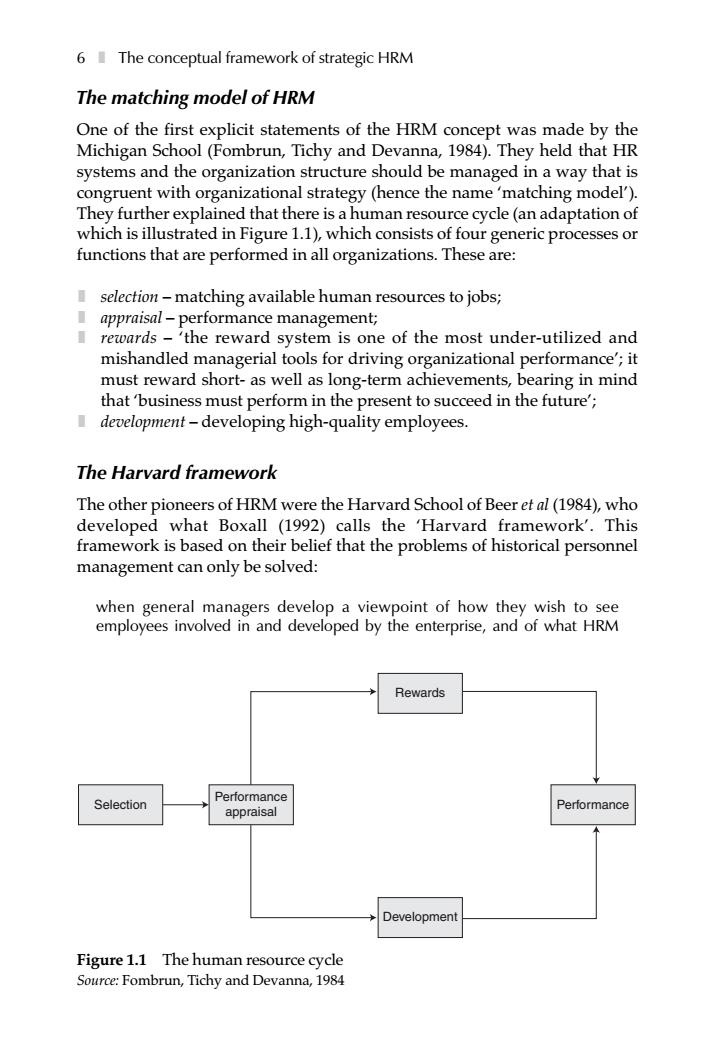正在加载图片...

6 The conceptual framework of strategic HRM The matching model of HRM One of the first explicit statements of the HRM concept was made by the Michigan School(Fombrun,Tichy and Devanna,1984).They held that HR systems and the organization structure should be managed in a way that is congruent with organizational strategy (hence the name 'matching model'). They further explained that there is a human resource cycle(an adaptation of which Figure 1.1)which consists of four generic processeso functions that are performed in all organizations.These are: selection-matching available human resources to jobs appraisal-performance management; rewards-the reward system is one of the most under-utilized and that 'business must perform in the present to succeed in the future'; development-developing high-quality employees. The Harvard framework The other pioneers of HRM were the Harvard School of Beeret al(1984),who developed what Boxall (1992)calls the Harvard framework'.This framework is based on their belief that the problems of historical personnel management can only be solved: when general managers develop a viewpoint of how they wish to see employees involved in and developed by the enterprise,and of what HRM Rewards Selection Figure 1.1 The human resource cycle Source:Fombrun,Tichy and Devanna,1984The matching model of HRM One of the first explicit statements of the HRM concept was made by the Michigan School (Fombrun, Tichy and Devanna, 1984). They held that HR systems and the organization structure should be managed in a way that is congruent with organizational strategy (hence the name ‘matching model’). They further explained that there is a human resource cycle (an adaptation of which is illustrated in Figure 1.1), which consists of four generic processes or functions that are performed in all organizations. These are: l selection – matching available human resources to jobs; l appraisal – performance management; l rewards – ‘the reward system is one of the most under-utilized and mishandled managerial tools for driving organizational performance’; it must reward short- as well as long-term achievements, bearing in mind that ‘business must perform in the present to succeed in the future’; l development – developing high-quality employees. The Harvard framework The other pioneers of HRM were the Harvard School of Beer et al (1984), who developed what Boxall (1992) calls the ‘Harvard framework’. This framework is based on their belief that the problems of historical personnel management can only be solved: when general managers develop a viewpoint of how they wish to see employees involved in and developed by the enterprise, and of what HRM 6 l The conceptual framework of strategic HRM Selection Performance Rewards Development Performance appraisal Figure 1.1 The human resource cycle Source: Fombrun, Tichy and Devanna, 1984